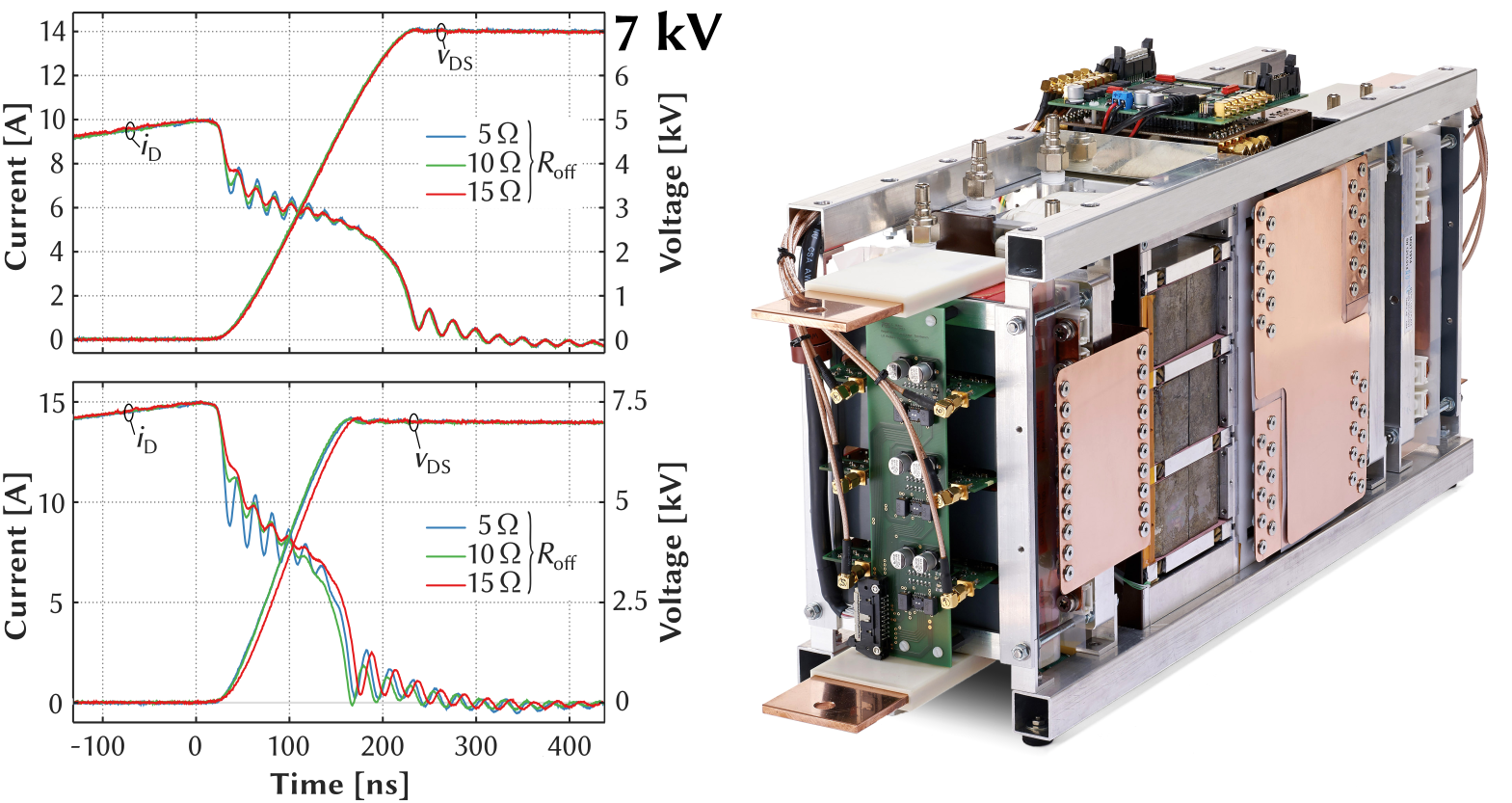Smart All-SiC Solid-State Transformers
Future applications such as high-speed trains or medium-voltage DC collecting grids for wind parks require a galvanic isolation between a medium-voltage system and a low-voltage system, yet the available space is constrained. Compared to conventional solutions employing conventional passive low-frequency transformers, solid-state transformers (SSTs) based on novel silicon carbide (SiC) power semiconductors provide supreme performance in terms of efficiency and power density.
Solid-state transformers (SSTs) are power electronic interfaces between a medium-voltage (MV) system (AC or DC) and low-voltage system (AC or DC), which provide galvanic separation by means of transformers that are operated with a frequency that is significantly higher than the grid frequency of 50Hz or 60Hz, i.e., in the range of several tens of Kilohertz. Especially in environments where the permissible weight and/or volume are restricted, such as future high-speed trains, future civilian or naval vessels with on-board MV AC or MV DC distribution systems, and even future all-electric aircraft concepts, SSTs can outperform solutions based on conventional low-frequency transformers in terms of efficiency and power density. Also in DC-DC applications such as MV DC collecting grids of wind parks or large photovoltaic plants, SSTs are required in case a galvanic separation and/or high voltage conversion ratios are needed.
Since several years, the Power Electronic Systems Laboratory of the D-ITET is dedicating various research projects to this emerging concept, whereby a holistic approach based on multi-objective optimization methods is employed, considering a wide range of aspects including but not limited to topologies (e.g., single-cell vs. multi-cell approaches), reliability, costs, efficiency, power density, isolation, protection, control, and also hardware prototype systems. As an example, a current project investigates low-complexity single-cell SST systems, which are enabled by the use of novel high-voltage silicon carbide (SiC) power semiconductors. These devices feature a yet unseen combination of very high blocking voltage capabilities (10kV and beyond) and switching characteristics that allow for very high switching frequencies. Therefore, a further reduction of the volume and weight of the isolation transformers as well as of the passive elements employed in EMI filters may be possible – be it in low-complexity single-cell SSTs for lower MV levels or in multi-cell SSTs whose applicability could be extended to higher MV levels.

The ESC Member involved in this project is Professor Johann Walter Kolar, Head of the Power Electronic Systems Laboratory (PES).
The research at the Power Electronic Systems Laboratory (PES) opens up new fields of applications and drives the innovation of power electronics systems in close partnership with both Swiss and international industry. In line with the focus areas of ETH Zurich, fundamentally new concepts, e.g., for sustainable energy systems, sustainable mobility, future datacenters, and medical applications, are of primary interest, along with general scientific challenges and the pursuit of excellence and an internationally leading reputation.
